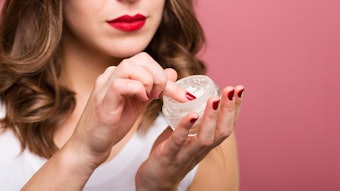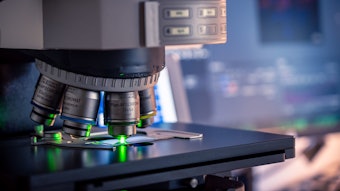
Editor's note: "Words from Wiechers" is a series considering the lessons our industry can learn from the late Johann Wiechers, Ph.D. He was an industry leader, colleague and critical thinker until his passing in 2011. Presenting Wiechers's insights is Tony O'Lenick.
In Chapter 50 of his book, Memories of a Cosmetically Disturbed Mind, Wiechers begins with a scientific observation about skin's natural moisturizing factor and topical penetration.
"If you extract too much natural moisturizing factor (NMF), you damage your barrier function and when that happens, skin penetration of whatever is applied onto the skin increases." He continues, "Since the advent of confocal Raman microspectroscopy, we know for certain what we had always expected. Our levels of NMF, our natural moisturizing factor, diminish toward the skin surface.
See related: Beauty Giants Uncover Skin Absorption of Some 50 Compounds
"NMF is a complex mixture of many amino acids, lactate and ions that are all water-soluble, so they should be easy to extract from the skin by water. And when are we surrounded by water? When we swim and when we take a bath or a shower.
"An article entitled, 'Variations of Skin Biophysical Properties After Recreational Swimming' by Sophie Gardinier, et al., describes a study in which the authors measure skin hydration, skin pH, transepidermal water loss (TEWL), skin temperature and sebum casual levels at different time points after the start of the study (0, 4, 24, 48 and 72 hr). The study was repeated a second time, but now the subjects were swimming for 1 hr between the first and second measuring point.
"During the control period, none of the skin parameters showed any significant variation over time on all body sites that were measured. In contrast, during the swimming period, significant changes were found 1.5 hours after swimming for skin pH (increased) and sebum casual levels (reduced on upper chest but not on the forehead), while TEWL and skin temperature remained unaffected. From the next measuring point (t = 24 hr) onward, all changes had disappeared.
"The point that I would like to raise to your attention is not my family life [as you will see, below], but the consequences of excessive showering. If you extract too much NMF, you damage your barrier function and when that happens, skin penetration of whatever is applied onto the skin increases. This is not only your washing up liquid, but also your ever-so-mildly formulated cosmetic products.
"But who is subsequently blaming our industry for producing cosmetic products that cause irritancy reactions? Our customers. The same customers that would have nothing to complain about if they did not shower too often, too hot and too long. So for some of the problems of which the cosmetic industry is accused, the consumers only have themselves to blame. But how we do explain to our customers the contradiction that water dries them out, whereas we cannot even convince our own children to be more careful with their [long and hot] showers that actually damage their skin?"
Johann is admonishing us not to adopt simple answers to complicated biosystems. Simplistically, who would think water applied to the skin would lower skin hydration? After all, simplistically, water should be the best hydrating agent.
See archived: Electric Effects; EI to Measure Skin Barrier Defects
Wiechers points out that the upper layer of our skin is a highly organized. Lipids, which are an essential component of living cells, are present in multiple ways within the skin and play a large role in supporting skin hydration. In the outer layer of skin—called the stratum corneum, skin barrier or lipid barrier, due to the large concentration of skin lipids in this layer—lipids appear in a stacked structure that act as a kind of glue to trap in water molecules and natural oils for optimal skin hydration, softness and elasticity. What sounds simplistically logical in fact does not predict the reality.
Indeed, we disrupt a highly organized system in our skin with hot water. As such, this cautionary tale serves as a reminder that there is still a lot for us to understand in cosmetic science and to keep an open mind to new concepts, even if it is uncomfortable at first.
See archived: Orthorhombic Phase Stabilization for Internal Occlusion; A New Mechanism for Skin Moisturization










